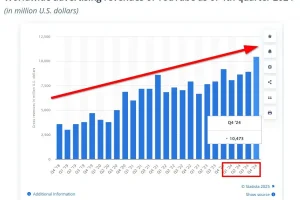Market manipulation (MM) refers to any activity which attempts to take advantage of market conditions to generate profits. This may involve corporate actions, price ceilings and floors, bid-ask spread discrepancies, as well as events like economic crises or recessions that alter these conditions.
Traders make money by placing limit orders at prices just above or below current market value, reaping small rebates that add up over millions of trades to generate significant profits.
Market Manipulation
Market manipulation has garnered significant research and regulatory scrutiny, as it can significantly impact prices and liquidity within financial markets. When this integrity of these financial e-markets is compromised, economic health at both local and national levels can suffer (Roodposhti & Sun 2017).
Market manipulation comes in many forms, from price manipulation to volume distorting activities such as “pumping” stocks with false information to increase their worth before “dumping” them when their price reaches an artificially elevated point.
Opening price manipulation occurs when fake buy or sell orders are submitted at the start of trading to increase or decrease asset prices (Cumming et al., 2011). This practice increases trading activity while drawing retail investors in, leading to greater price volatility than with non-manipulated stocks. Effective external oversight and internal governance practices can mitigate this mispricing practice.
Market Liquidity
HFT traders make hundreds of trades every second in response to news, earnings reports, economic data and political events. Their trading strategies range from statistical arbitrage to event arbitrage and more.
Speed is key for successful high-frequency trading. Fast traders get to submit orders first, avoid trading with slower competitors, and seize lucrative trading opportunities before they vanish.
Faster firms employ strategies such as “pinging”, which involves placing small buy or sell orders near market price to see whether there is any interest for them. Furthermore, they pay brokers to route their orders through them so they can see other traders’ orders prior to being executed; giving them milliseconds’ worth of advance knowledge of price changes. Such practices have drawn significant scrutiny from regulators; these practices could violate laws against insider trading.
Market Timing
Though it is impossible to ascertain whether high-frequency trading harms or helps market performance, we know it exacerbates negative trends – such as when the Dow dropped thousands of points within minutes during 2010’s “flash crash”.
High-frequency traders see when large investors such as CalPERS place orders for Apple shares on one exchange as an opportunity. Pinging allows them to send multiple small orders at once to various exchanges simultaneously and if any are filled immediately they can infer that the investor intends to sell – creating a form of electronic front running that pays out in profits to high-frequency traders.
HFT manipulation, which also takes place in dark pools and other corners of the investment world that remain relatively obscure from public view, reduces liquidity and misaligns stock prices with those involved in its practice – an event which should concern all investors regardless of their involvement with HFT themselves.
Regulation
High-frequency traders rely on sophisticated programs to identify trading opportunities quickly and execute trades more rapidly than human traders can. HFT traders pay for faster data feeds and position their servers near exchange servers for optimal communications times; their speed allows them to take advantage of small differences that appear and vanish within fractions of seconds.
Goal is to stay ahead of market trends, anticipating them and acting upon them before traditional traders catch on, in order to reduce transaction costs and boost liquidity.
Critics contend that high-frequency traders can create dangerous distortions. For instance, when CalPERS issues orders to purchase Apple shares through CalSIF, high-frequency traders could potentially front-run this order by purchasing shares elsewhere before it arrives – this practice is known as electronic front-running and makes trades of other investors more costly. Regulation proposals would limit such trader abuse by forcing them to “rest” orders for several milliseconds; however poorly conceived regulations may harm markets rather than producing tangible benefits.








